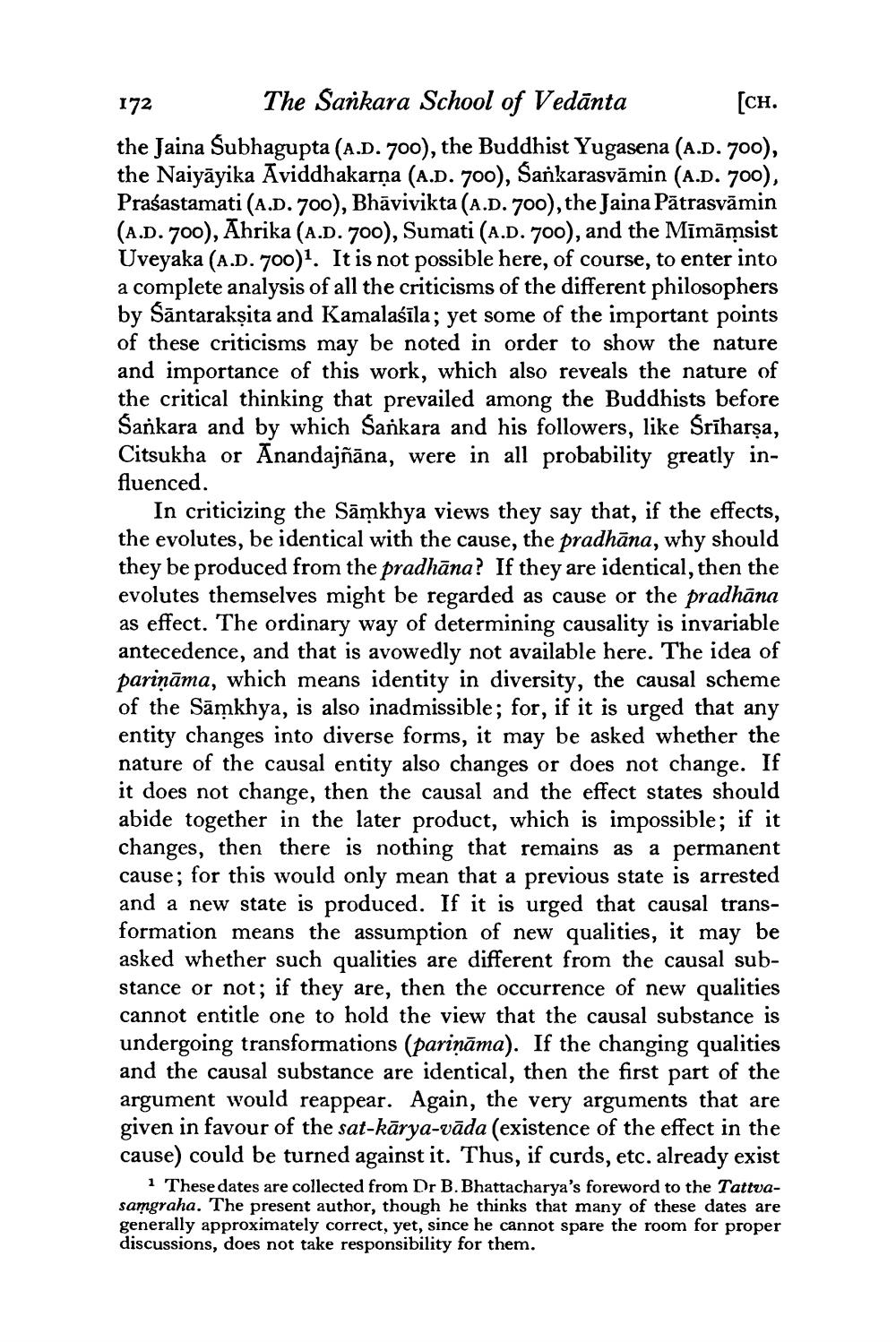________________
172
The Sankara School of Vedānta [CH. the Jaina Subhagupta (A.D.700), the Buddhist Yugasena (A.D. 700), the Naiyāyika Aviddhakarņa (A.D. 700), Sankarasvāmin (A.D. 700), Praśastamati (A.D. 700), Bhāvivikta (A.D. 700), the Jaina Pătrasvāmin (A.D.700), Ahrika (A.D.700), Sumati (A.D.700), and the Mīmāmsist Uveyaka (A.D.700)". It is not possible here, of course, to enter into a complete analysis of all the criticisms of the different philosophers by Sāntarakṣita and Kamalaśīla; yet some of the important points of these criticisms may be noted in order to show the nature and importance of this work, which also reveals the nature of the critical thinking that prevailed among the Buddhists before Sankara and by which Sankara and his followers, like Śrīharşa, Citsukha or Anandajñāna, were in all probability greatly influenced.
In criticizing the Sāmkhya views they say that, if the effects, the evolutes, be identical with the cause, the pradhāna, why should they be produced from the pradhāna? If they are identical, then the evolutes themselves might be regarded as cause or the pradhāna as effect. The ordinary way of determining causality is invariable antecedence, and that is avowedly not available here. The idea of parināma, which means identity in diversity, the causal scheme of the Sāmkhya, is also inadmissible; for, if it is urged that any entity changes into diverse forms, it may be asked whether the nature of the causal entity also changes or does not change. If it does not change, then the causal and the effect states should abide together in the later product, which is impossible; if it changes, then there is nothing that remains as a permanent cause; for this would only mean that a previous state is arrested and a new state is produced. If it is urged that causal transformation means the assumption of new qualities, it may be asked whether such qualities are different from the causal substance or not; if they are, then the occurrence of new qualities cannot entitle one to hold the view that the causal substance is undergoing transformations (pariņāma). If the changing qualities and the causal substance are identical, then the first part of the argument would reappear. Again, the very arguments that are given in favour of the sat-kārya-vāda (existence of the effect in the cause) could be turned against it. Thus, if curds, etc. already exist
1 These dates are collected from Dr B. Bhattacharya's foreword to the Tattvasamgraha. The present author, though he thinks that many of these dates are generally approximately correct, yet, since he cannot spare the room for proper discussions, does not take responsibility for them.




